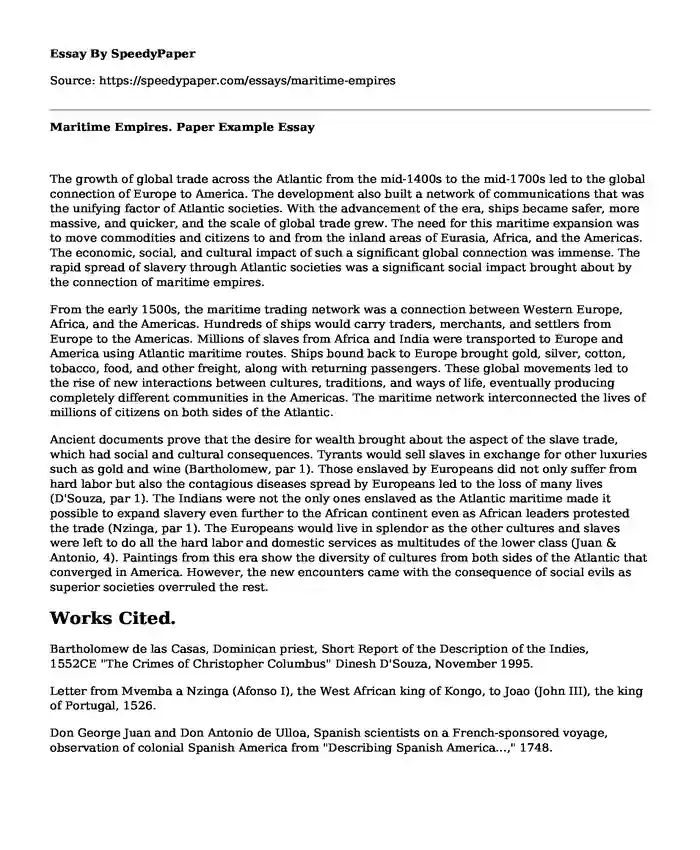The growth of global trade across the Atlantic from the mid-1400s to the mid-1700s led to the global connection of Europe to America. The development also built a network of communications that was the unifying factor of Atlantic societies. With the advancement of the era, ships became safer, more massive, and quicker, and the scale of global trade grew. The need for this maritime expansion was to move commodities and citizens to and from the inland areas of Eurasia, Africa, and the Americas. The economic, social, and cultural impact of such a significant global connection was immense. The rapid spread of slavery through Atlantic societies was a significant social impact brought about by the connection of maritime empires.
From the early 1500s, the maritime trading network was a connection between Western Europe, Africa, and the Americas. Hundreds of ships would carry traders, merchants, and settlers from Europe to the Americas. Millions of slaves from Africa and India were transported to Europe and America using Atlantic maritime routes. Ships bound back to Europe brought gold, silver, cotton, tobacco, food, and other freight, along with returning passengers. These global movements led to the rise of new interactions between cultures, traditions, and ways of life, eventually producing completely different communities in the Americas. The maritime network interconnected the lives of millions of citizens on both sides of the Atlantic.
Ancient documents prove that the desire for wealth brought about the aspect of the slave trade, which had social and cultural consequences. Tyrants would sell slaves in exchange for other luxuries such as gold and wine (Bartholomew, par 1). Those enslaved by Europeans did not only suffer from hard labor but also the contagious diseases spread by Europeans led to the loss of many lives (D'Souza, par 1). The Indians were not the only ones enslaved as the Atlantic maritime made it possible to expand slavery even further to the African continent even as African leaders protested the trade (Nzinga, par 1). The Europeans would live in splendor as the other cultures and slaves were left to do all the hard labor and domestic services as multitudes of the lower class (Juan & Antonio, 4). Paintings from this era show the diversity of cultures from both sides of the Atlantic that converged in America. However, the new encounters came with the consequence of social evils as superior societies overruled the rest.
Works Cited.
Bartholomew de las Casas, Dominican priest, Short Report of the Description of the Indies, 1552CE "The Crimes of Christopher Columbus" Dinesh D'Souza, November 1995.
Letter from Mvemba a Nzinga (Afonso I), the West African king of Kongo, to Joao (John III), the king of Portugal, 1526.
Don George Juan and Don Antonio de Ulloa, Spanish scientists on a French-sponsored voyage, observation of colonial Spanish America from "Describing Spanish America...," 1748.
Cite this page
Maritime Empires. Paper Example. (2023, Jul 30). Retrieved from https://speedypaper.net/essays/maritime-empires
Request Removal
If you are the original author of this essay and no longer wish to have it published on the SpeedyPaper website, please click below to request its removal:
- Free Essay on the Views of Langston Hughes on America
- Free Essay: Western Heritage
- Early Warning Signs of ASD
- Paper Example. Men in the Sun
- Free Essay. Distant Suffering' of Others Produce a Sense of Compassion
- Essay Sample on Media Violence & Its Link to Violent Behaviour in Youths
- Nurturing Emotional Development: Parental Strategies for Infants and Toddlers - Report Example
Popular categories





